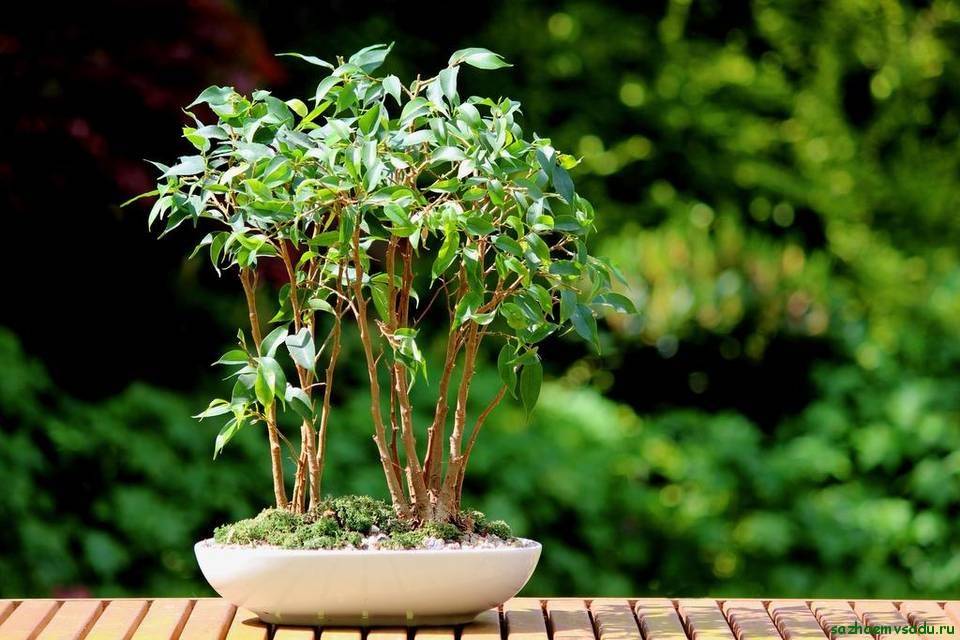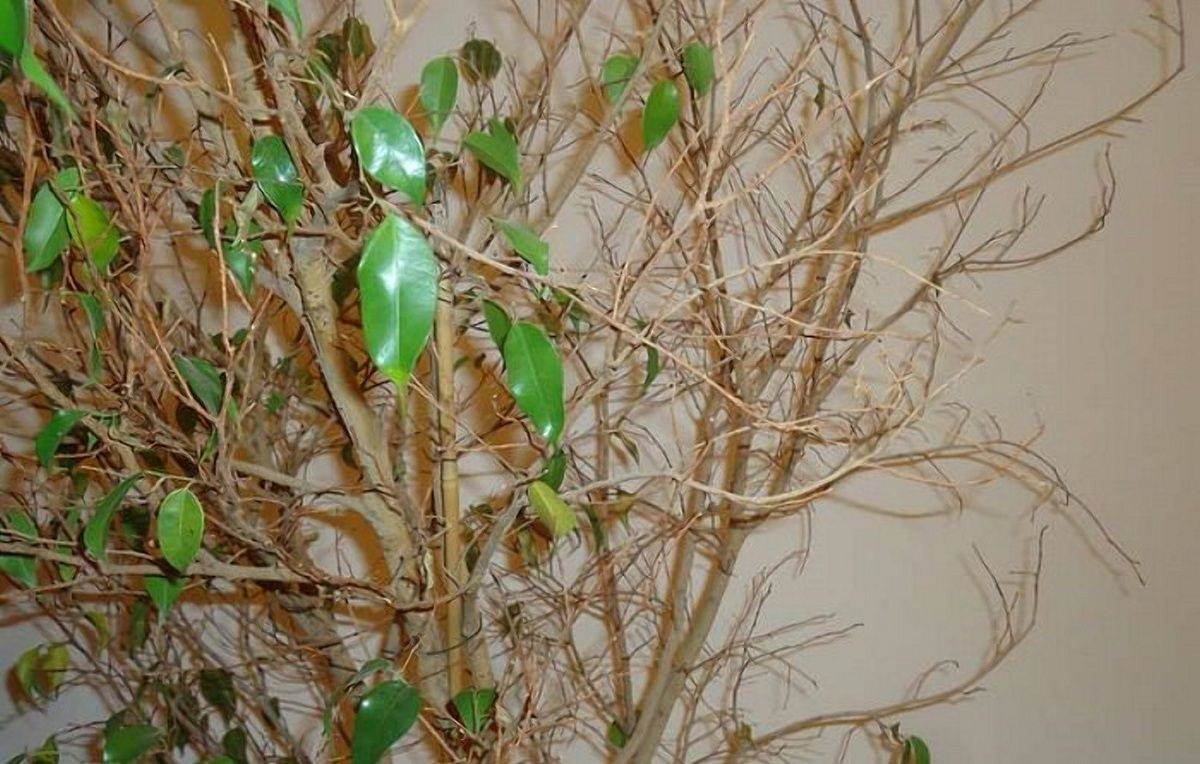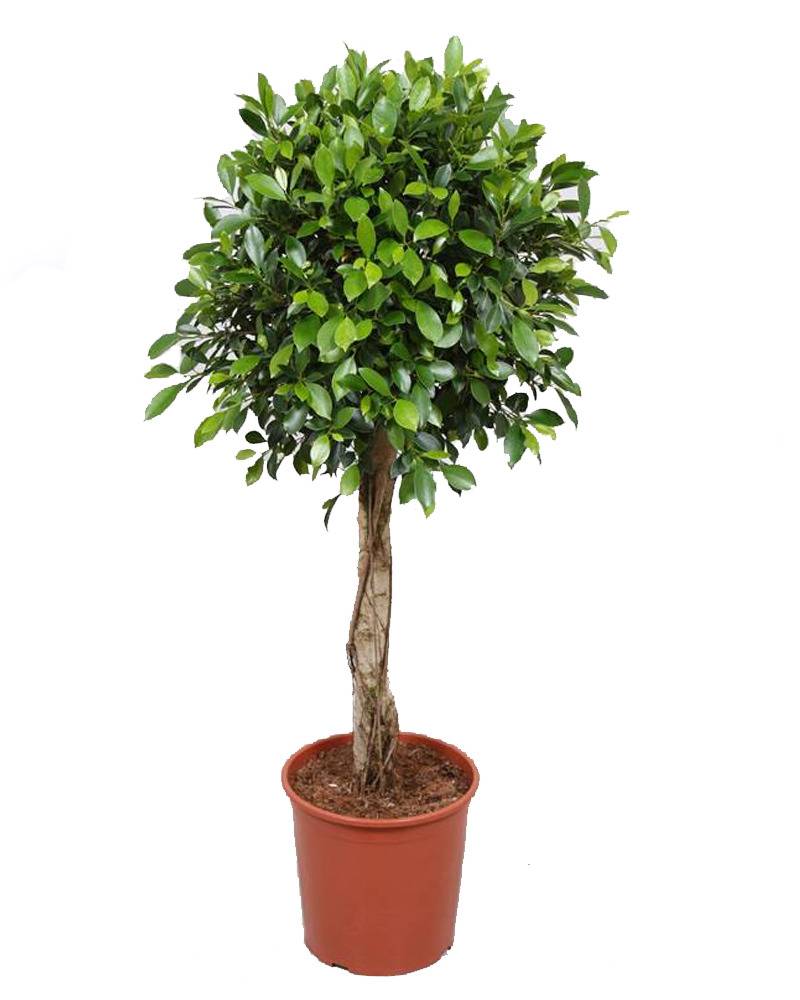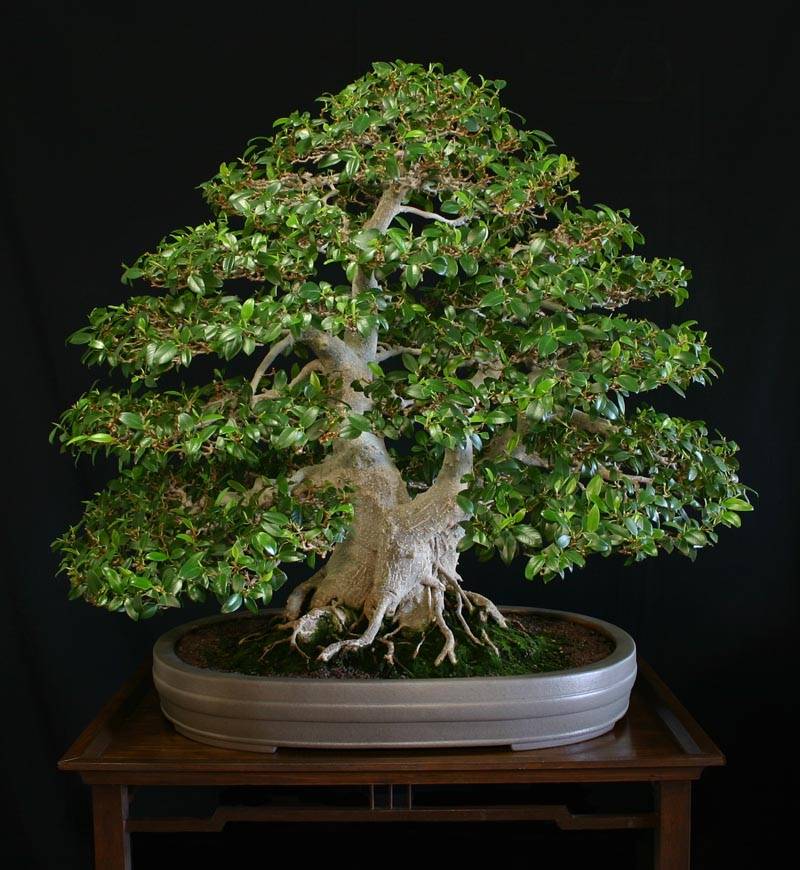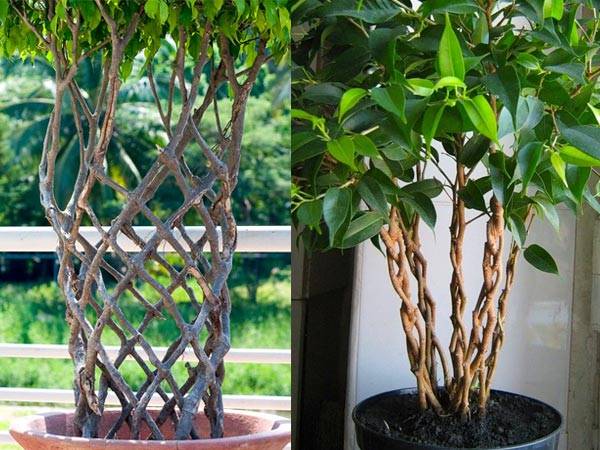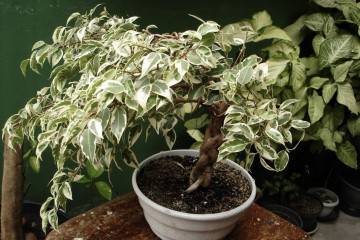How to trim Ficus correctly for shaping
Content:
Ficus is a great houseplant that can liven up and decorate any interior. Its crown, reminiscent of a compact tree, spreads useful substances in the air and at the same time cleans the air in the room.
To give the plant an attractive appearance, it must be pruned. From this article you can learn how to do it correctly and what time to choose for it.
What is pruning for?
With it, you can solve the main problems of growing and care. But not everyone knows how to cut ficus correctly. After all, using different techniques, you can give it the shape of a bush or trunk, and you can also use the weaving of the main trunk, thereby increasing the decorative effect.
At home, this procedure allows you to:
- remove dry and damaged stems;
- reduce the shape and size if the plant has become too large for room;
- correct the shape, giving it fluffiness;
- perform manipulation for the purpose of recovery;
- remove weakened shoots.
- allow the plant to grow faster.
If you want to apply any special techniques that are quite complex, this work should be entrusted to professionals.
Since it is quite difficult to form a ficus, only a specialist can grow a bonsai from a tree, as well as weave an original composition from the trunk.
Trim time and tool preparation
Pruning is best done in the spring or as soon as summer has arrived. If the plant is sick, then they cut it off as soon as they saw the disease.
Tools must be wiped thoroughly with alcohol in order to disinfect.
General rules for pruning ficus
When carrying out this procedure, the following conditions must be met:
- adhere to the highest possible cleanliness so that through the cuts in the bark you do not bring disease or fungus into the ficus bush;
- carefully examine the plant before pruning;
- at the next stage, it is necessary to visually highlight those parts that protrude beyond the desired shape;
- it is necessary to cut off the branches above the bud;
- after cutting off, it is necessary to collect the juice that has emerged with a napkin, and then sprinkle the wound with crushed charcoal;
- in the case of removing young shoots that have not yet become stiff, you can simply pinch them.
If you plan to propagate the plant, then the cut material is not thrown away. It can then be used for reproduction.
Preparing ficus for pruning
Pruning can only be done if the plant conditions have not changed. Otherwise, it gets into stressful conditions, from which it comes out badly later.
Before you start pruning at the ficus, you need to prepare all the tools:
- sharpened knife;
- small secateurs;
- special garden shears in 2 sizes (larger and smaller).
How to form a ficus at home
It is necessary to pay attention to the fact that thin branches that have not had time to intensively stiffen can be cut with scissors. In this case, the edge should be smooth. If you need to remove a thick branch from an adult plant, then cut it under the bevel and preferably with a sharp pruner.
In the spring, you can carry out not only pruning the bush, but also replanting it if it does not fit the size of the pot in which it is currently located. These two procedures must be carried out sequentially. First, the plant is cut and only then, after 15 days, it can be transplanted into another pot.
The pruning procedure is not limited to just cutting branches. You should also take measures to prevent infection of the plant.
All sections on the bush must first be blotted with a napkin (thereby removing the milky juice), and then treated with disinfectants. For this, charcoal or activated carbon crushed into fine powder is suitable. It is necessary to ensure that the entire cut surface is covered with this powder.
Pruning to rejuvenate the plant
This procedure is done so that the decorative look is as attractive as possible. Most often, such pruning is needed by adults and old ficuses, as well as those indoor plants that, for some reason, have most of the branches that have lost their vitality.
This requires:
- cut off all dead branches;
- cut live in the middle.
The rejuvenating procedure should be carried out in the month of March, before the intensive vegetation process begins.
Sanitary pruning
This type of procedure can be performed at absolutely any time of the year. It is performed as needed and consists in removing diseased, dry or poorly and underdeveloped shoots.
This action not only heals the plant, but also returns it to a more attractive appearance.
If suddenly any diseases arose on Benjamin's ficus, then the shoots affected by the infection or parasites must be cut off and burned. It is necessary to do this procedure immediately, as soon as signs of disease are noticed on the plant.
Ficus plant: how to form a crown and a general view
Since trimming the ficus so that it is fluffy is not an easy task, you should familiarize yourself with all the rules for forming the crown and improving the general appearance of the plant:
- branches are partially deleted and only those that are unsuccessfully located;
- the thicker the shoot, the more pronounced the bevel of the cuts should be;
- if you need to get a fairly compact and at the same time voluminous fluffy plant, the top must be pinched periodically. And pinch, not cut. So that later, after trimming, a thick cut off trunk does not stick out from above;
- if the plant has suffered a disease and has weakened quite intensely, then it is necessary to radically cut it. The central trunk is shortened significantly, the side branches are also intensively cut.But it is important to remember that a flower that is too shortened will simply not be able to recover, due to the lack of the proper number of buds and the ability to give side shoots.
If you need to get the most effective tree, then you can try to use ficus weaving. True, it will take quite a long time, patience and skills. To implement it, it is necessary to plant several plants in one large tub at the same time. And then, with the help of certain clamps and possibly an insert, start weaving a frame from the trunks. After the branches are stiff, the ficus begins to hold the given shape.
Ficus: how to form
The standard forms of the ficus plant are very original, but not everyone knows how to form it in this case. The main secret lies in the fact that all lateral shoots are carefully cut off.
Creation of unusual shapes
Before you start cutting branches from your home plant, you need to know how to trim the ficus correctly and give it the desired shape. Today, there are several main methods that allow you to form certain types of crowns:
- sculptural;
- in the form of a trunk;
- forming a bush;
- creating a longline stem;
- for some species the bonsai technique can be used.
In fact, nature laid it down so that Benjamin's ficus forms a fairly spreading and high crown. But with the help of pruning, you can form a bush shape. To do this, you just need to pinch the central shoot of the plant. In this case, there is an intensive formation of lateral processes. If this manipulation is done deliberately to increase fluffiness, then in a year the plant will become sprawling and lush.
Stamb - this name covers a certain form of a plant, which has a pronounced stem part and a clearly delineated crown. It is best to use in this case varieties of ficus that have small foliage.
The stem can be:
- single - while in plants one trunk of sufficient length is observed, and a rounded or oval crown is formed on top;
- tiered - in this case, the crown has several tiers, each of which is sufficiently separated from the neighboring one, between them the stem parts of the plant should be clearly visible.
If you wish, you can experiment with the tree. Its crown can be of the most unusual shape. But cultural pruning, carried out to increase aesthetics, on small-leaved ficuses looks best. And in order to maintain the appearance of the plant, this process must be regular.
To form such a ficus in shape, it is necessary to remove all lateral branches in the lower part, leaving only a few shoots on top. As soon as it was possible to form a smooth, rather long, 15-20 cm trunk, they begin to form a crown. When the desired height is reached, the upper shoots are cut to approximately 5-8 cm for the plant that will stand on the table. And for a length of up to 15 cm for an outdoor tree. Further crown formation occurs according to the same principle as in a bush plant.
To form a bushy form with density and splendor, several cuttings must be planted in a pot at once, as close to each other as possible. Once they have reached a height of 15 cm, they are pinched so that about 5 leaves remain.After the lateral shoots have stretched 15 cm, they must be shortened in the same place. But it is necessary to do this carefully, and observe that the remaining bud looks from above into the plant. Thus, the outer shape of the plant will be round and neat. The third stage of pruning will form a fairly large and at the same time neat and dense bush. If it is too thick, then several shoots can be removed from the middle part. A distinctive feature of growing a bush form is that the plant needs uniform lighting. If this is not possible, then you will have to periodically turn the pot, exposing different sides of the bush to the light.
The longline stem is more difficult to form than the usual one. The most commonly used technique is:
- first, they form an ordinary standard bush - its crown can be either round or oval;
- then it is necessary to cut off the shoots so that the central trunk remains, which should look straight up;
- as it thickens, the lateral shoots on it are removed to the height that is needed;
- then, as soon as it reaches the desired length, they begin to re-form the crown.
To form a longline stem, one cuttings are used, planted in a pot.
Bonsai are original plants that can be formed from any varieties of Benjamin ficus. But the most colorful plants come from the wyandy species. It grows rather slowly and has a trunk with wavy curvatures. This technology uses copper wire to wrap the shoots. Bending it, it turns out to give interesting shapes to the tree.
Sculptural forms of ficus take quite a long time. Only an experienced gardener can grow such forms. Most often, the branches that are directed inward, towards the main trunk, are removed. And those directed outside - leave. Thus, the crown is sufficiently branched and given the desired shape.
When growing rubbery ficus, pruning and shaping can be the same as for Benjamin's ficus. If you want to form a liana-like shape, then the side shoots can be removed. And if you want to get a more compact plant, the central stem is shortened. Thus, the pruning of ficus rubber is as simple as possible. It allows you to form a regular and beautiful bush.
Post-pruning activities
After these procedures have been completed, it is necessary to adhere to the same conditions of detention as before. It is optimal to adhere to temperatures between 15 and 21 ° C. And you need to put the flowerpot near the window illuminated by the sun. For variegated species, ensure direct sunlight for at least 2 hours per day. It is not worth it longer, as this can lead to burns on the sheet plate.
Thus, there are many ways to form the crown and the general appearance of the ficus. It is necessary to take into account the age of the plant and other conditions in which it is kept. By following the tips, you can create a beautiful image of the flower without damaging it.
